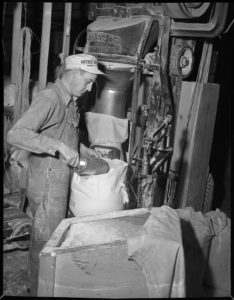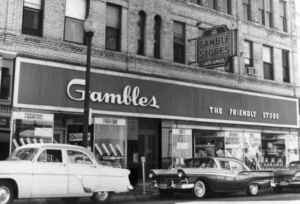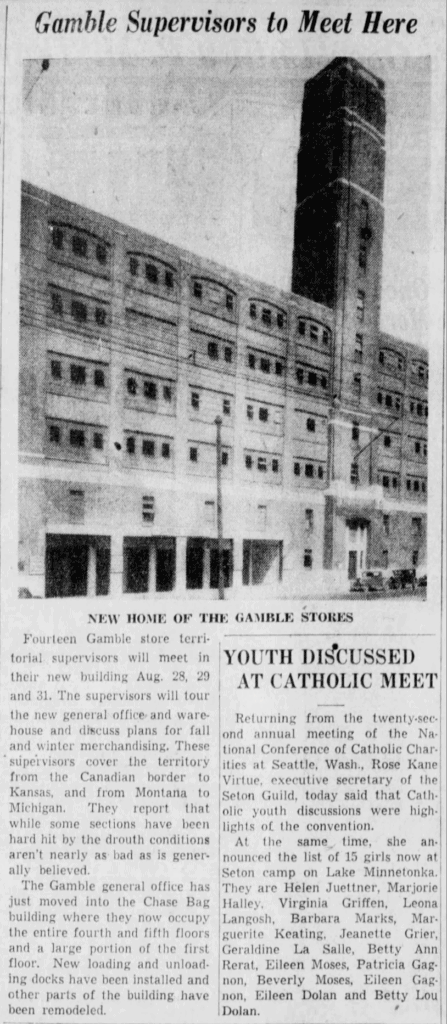
Loop Back: Making Flour Bags
To meet the growing demand for burlap and cotton bags from the city’s milling industry, Northern Bag built this sprawling factory and warehouse in 1920.
The building’s tall tower wasn’t just for decorative purposes. The company built it to hold water, because at the time, the city’s water pressure wasn’t strong enough to reach the upper floors of a building this big.

Northern Bag had its roots in the Mill District of Minneapolis, a company that previously manufactured wooden barrels for the milling companies—back when large barrels of flour would be delivered to grocers who would then scoop it into individual sacks for customers. The barrel company was known then as Hardwood Manufacturing and Storage.

As mills discovered the cost savings of buying and shipping bags, though, barrel production dropped and Hardwood Manufacturing made the switch to bags, renaming itself Northern Bag in 1915, and quickly finding itself in need of a larger factory.
Homemakers enjoyed the switch to bags as well, with many of them repurposing their empty flour bags into clothing or dish towels.
Northern Bag merged with Chase Bag in 1925 and continued operations in this facility, using the Chase name.

In 1936, a rapidly-expanding chain of department stores, Gambles, moved its warehousing operations to the Chase building, occupying half the first floor and all of the fourth floor. Later in the year, the company also moved its general offices into the 5th floor after first installing some soundproofing so its 250 office workers didn’t have to listen to the warehouse noise below.

The parent company of Gambles, Gamble-Skogmo, was founded by two friends, Bert Gamble and Phil Skogmo, who opened their first store—an auto supply store—in St. Cloud in 1925. Over time, the company added hardware, appliances, housewares, clothing, furniture and other items to their stores.
At its peak, Gamble-Skogmo had more than 4,000 stores in 38 states, including Gambles, Red Owl and Snyder Drug Stores.

1936 newspaper clipping
By 1946, Gamble-Skogmo needed even more warehouse space, so it moved its office workers (who were, by then, using both the 4th and 5th floors) out of here, added more conveyor equipment, and expanded their loading and dock facilities.
Please visit the Historic North Loop section of this website for many more fun photos and articles about our neighborhood’s history.
By Mike Binkley, North Loop volunteer*
(*not an actual historian; I just pulled together information from newspaper archives, public records, online searches and most helpfully, the digital archives at the Hennepin County Library)

